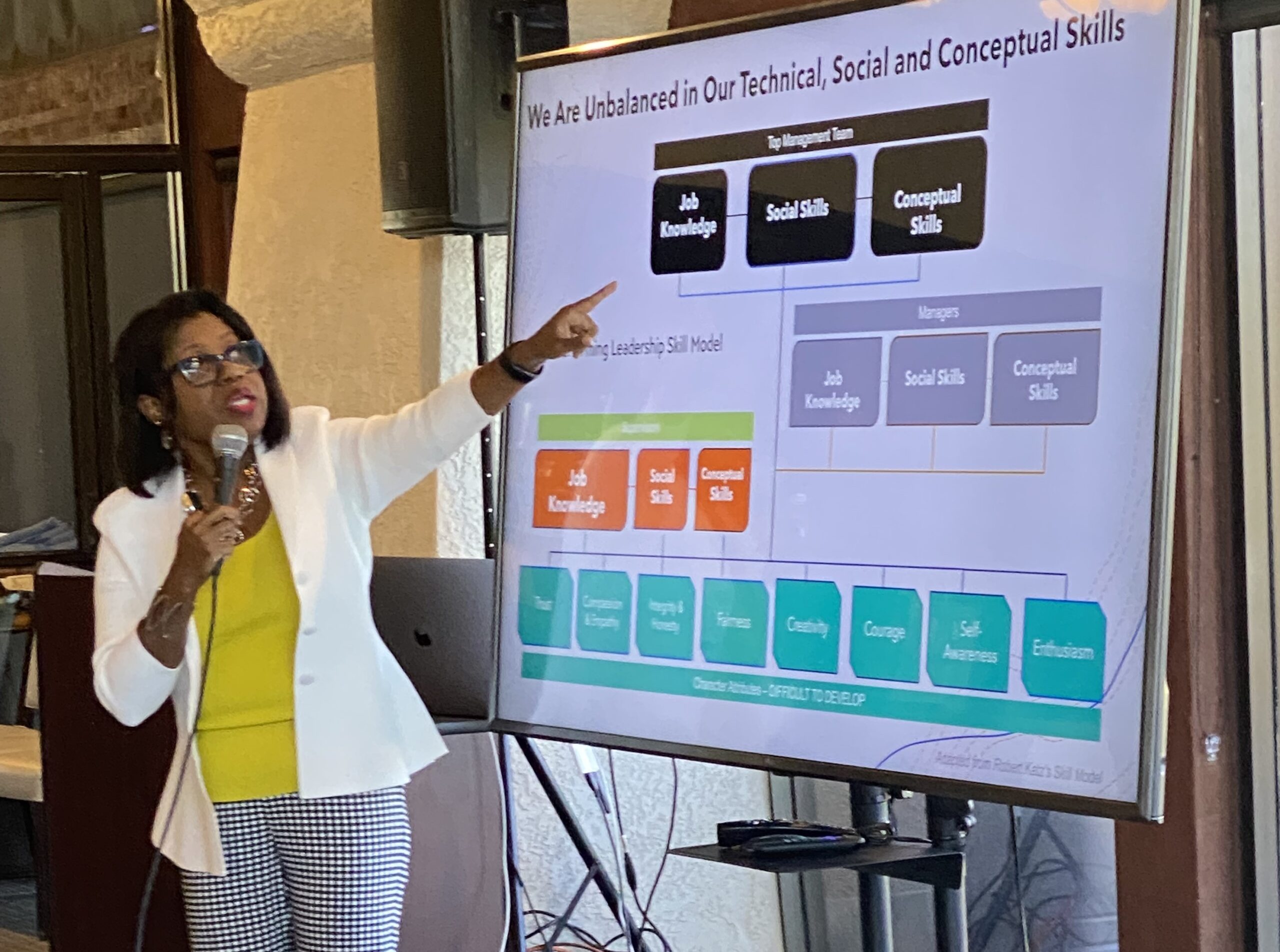What is Executive Presence? It’s about being confident and showcasing that confidence in a way that makes others believe you have the skills, capabilities and talent to help them achieve their goals.
It’s very selfish. It is about you and others. When you have a winning presence, people think about themselves – and how you can help them. When you do not, they distance themselves from you, and it becomes about how you can help yourself.
According to the Economist, “At its core, executive presence is about confidence, yet ‘the more confidence the better’ isn’t necessarily the case. Harvard business school professor Amy Cuddy’s talk on presence is the second-most-watched TED Talk of all time. In her book Presence: Bringing Your Boldest Self to Your Biggest Challenges, she writes that a quiet confidence is best. ‘Presence is confidence without arrogance,’ she explains.”
Executive presence is the consistent ability to influence others and drive results. It requires leaders to possess command and control of their reputation and how they are perceived.
Case Study:
I was coaching a young association leader for her first CEO job. All of our sessions were in person. She had an impressive resume and no challenges with articulating her prior experience. We examined what the Board might be looking for and practiced how she could respond to key questions that would make them confident she was ready for the job. Key areas of exploration included financial acumen, leading and engaging people, dealing with situational roadblocks, taking over from a legacy leader, etc. She was confident and articulated herself well. During our final session, she was going in for the last interview with the Board and wanted to discuss what her strategy might be. She was nervous. I asked what was going on, and she said, “I get the sense they don’t think I’m ready.” I asked why and she said, “They seem to focus on questions about how I might influence people, get them to follow my leadership, or deal with really challenging people.”
STOP: What is getting in her way?
As she spoke, I took notice of her body language. When she was confident about herself, she sat erect and communicated confidence in the use of her words, eye contact, and her body language. When she expressed less confidence, she’d cock her head to the side, her voice would become low and softer, she’d fiddle with her glasses, and she’d swing her hair, among other signs. Her body language clearly showed she was less confident about her capabilities in this area.
STOP: What signals were being sent to the interviewers without her knowledge?
Confidence is something we express in our speech, our posture, body language, our stance, our intonation, etc. Looking the part goes beyond your hair and clothes; it goes into something much deeper and often overlooked. We call this executive presence.
With her permission, I shared my observation and offered a few tips to help her that included:
- Pin up her hair. This would prevent her from having to constantly swing it out of the way, giving the unintentional impression that she is young and therefore inexperienced (though we know the two are not mutually exclusive).
- Practice speaking with her hair pinned up.
- Recognize what aspects of her talent need growth and develop confidence around how she would mitigate any concerns to the Board.
- Practice adopting better body language. This rings especially true for women. We tend to cock our heads to the side when less confident or are trying to convey being open and approachable. This is good for getting a date, not so much when trying to convince a Board you can run their organization. We addressed ways she could practice demonstrating confidence in her body language, posture and stance.
GO: She got the job!
The messages you send in how you carry yourself MUST complement your resume, LinkedIn profile and references. Leaders with executive presence cultivate and connect meaning and purpose in corporate and private matters and are intentional in their professional appearance and interactions with others.
GO: Now evaluate your executive presence. How would you rate your level of presence?



